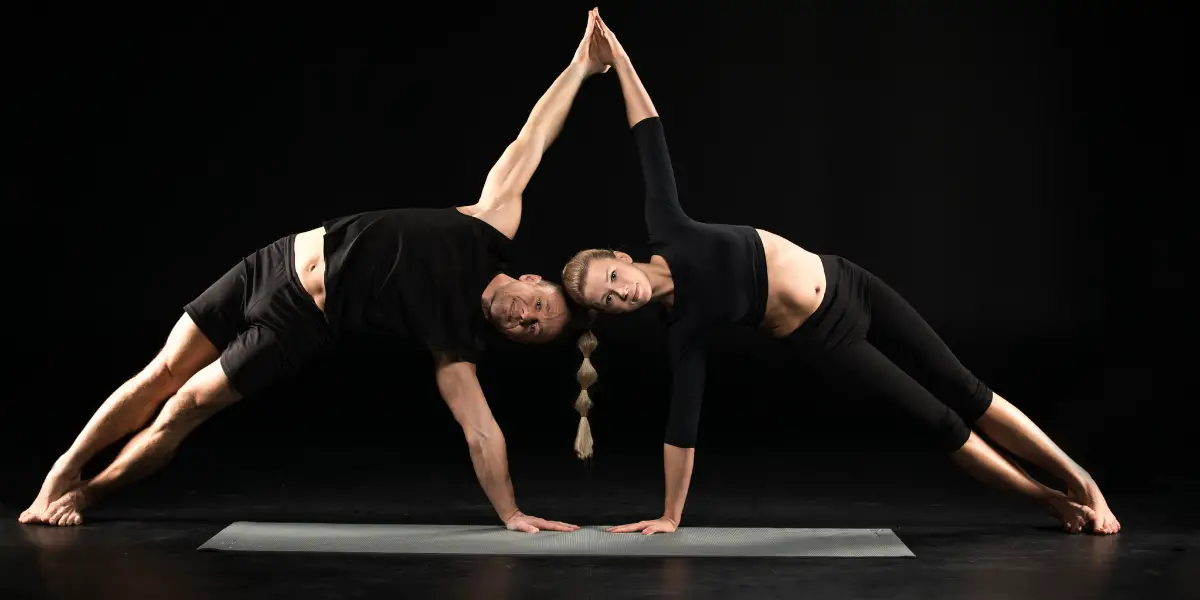Resistance bands have become a popular piece of equipment in the fitness world. They are lightweight, inexpensive, and versatile, which makes them an ideal choice for home workouts. But the question remains: do resistance band workouts work?
Yes, resistance band workouts are effective in building muscle strength and toning the body. They provide a low-impact yet challenging workout that targets multiple muscle groups at once. Resistance bands also offer versatility in terms of exercises and can be used for a full-body workout.
In fact, resistance band workouts can be just as effective as traditional weightlifting for building strength and muscle!
Resistance bands come in different levels of resistance, which means you can adjust the intensity of your workout to challenge yourself.
They are also great for targeting specific muscle groups and improving range of motion. Resistance bands can be used for a variety of exercises, from squats and lunges to bicep curls and shoulder presses.
They are also a popular choice for rehabilitation and therapy, as they can help improve flexibility and strengthen muscles without putting too much strain on the body.
However, like any piece of exercise equipment, resistance bands have their limitations. They may not be suitable for everyone, especially those who are looking to build a significant amount of muscle mass. Additionally, the level of resistance may not be enough for more advanced lifters. Nevertheless, resistance bands can be a valuable addition to your workout routine, whether you’re a beginner or an experienced athlete.
How Do Resistance Bands Work?
Resistance bands are versatile and portable exercise tools that can help you build strength, improve flexibility, and tone your muscles. They work by creating tension in your muscles, which forces them to work harder than they would without the band. In this section, we’ll explore the different types of resistance bands, how to use them, and why they’re effective for building strength and toning your body.
Types of Resistance Bands
Resistance bands come in different shapes, sizes, and materials. The most common types are:
- Loop bands: These are circular bands that you can wrap around your legs or arms. They’re ideal for lower body exercises like squats and lunges.
- Tube bands: These are long, thin bands with handles on each end. They’re suitable for upper body exercises like bicep curls and shoulder presses.
- Figure-eight bands: These are shaped like a figure-eight and can be used for both upper and lower body exercises.
- Therapy bands: These are wider and thicker bands that are ideal for rehabilitation exercises.
Resistance bands also come in different resistance levels, ranging from light to heavy. Lighter bands are suitable for beginners or those recovering from an injury, while heavier bands are ideal for advanced users or athletes.
How to Use Resistance Bands
Resistance bands are easy to use and can be incorporated into your workout routine in different ways. Here are some exercises you can do with resistance bands:
- Squats: Place the loop band around your thighs, just above your knees. Stand with your feet hip-width apart and squat down, keeping your knees in line with your toes.
- Bicep curls: Stand on the tube band with your feet shoulder-width apart. Hold the handles with your palms facing up and curl the band towards your shoulders.
- Shoulder presses: Stand on the tube band with your feet shoulder-width apart. Hold the handles with your palms facing forward and press the band overhead.
- Rows: Sit on the floor with your legs straight and loop the band around your feet. Hold the handles with your palms facing each other and pull the band towards your chest.
- Deadlifts: Stand on the tube band with your feet hip-width apart. Hold the handles with your palms facing your thighs and lift the band by straightening your legs and hips.
Resistance bands can also be used for full-body workouts, such as resistance band walks and jumps, or for targeting specific muscle groups like your abs, glutes, and hips.
They can also be used in your Pilates workout, give this routine a try and let me know how you get on in the video comments.
Why Are Resistance Bands Effective?
Resistance bands are effective for building strength and toning your body because they create tension in your muscles, which forces them to work harder. They also offer a different kind of resistance compared to free weights or weight machines, as the tension is constant throughout the entire range of motion.
Resistance bands are also accessible to people of different fitness levels and can be used for a variety of exercises, making them a versatile tool for building strength and conditioning your body. They’re also portable, which means you can take them with you wherever you go and get a workout in no matter where you are.
In conclusion, resistance bands are an effective and accessible tool for building strength, toning your body, and improving your overall fitness. By incorporating resistance band exercises into your workout routine, you can target different muscle groups and achieve your fitness goals in a different way.
Can Resistance Band Workouts Replace Weightlifting?
Resistance band workouts have become increasingly popular in recent years, with many people wondering if they can replace traditional weightlifting for building strength and muscle. While resistance bands can be a valuable addition to your fitness routine, they do have some limitations that make them less effective than weightlifting in certain aspects.
Strength Gains with Resistance Band Workouts
Resistance band workouts can certainly help you strengthen and build muscle. They are versatile and can be used to target specific muscle groups, making them a great addition to any workout routine. Additionally, resistance bands are lightweight and inexpensive, making them a convenient and affordable option for exercise equipment.
One of the benefits of resistance bands is that they provide variable resistance, meaning the resistance increases as the band is stretched. This can help challenge your muscles throughout the entire range of motion, leading to greater muscle activation and potentially greater gains in strength and muscle size.
Research indicates that resistance-band training has been proven to enhance stabilizer muscles more effectively compared to weight training. These muscles play a pivotal role in supporting larger muscles and joints, which in turn reduces the risk of injuries and enhances overall functionality.
Limitations of Resistance Band Workouts
While resistance bands can be a valuable tool for building strength and muscle, they do have some limitations. One of the biggest limitations is that they have a limited range of resistance levels compared to traditional weightlifting equipment like barbells and dumbbells. This can make it difficult to progressively overload your muscles over time, which is necessary for continued gains in strength and muscle size.
Resistance bands also have limitations in terms of the exercises that can be performed with them. While they can be used to target specific muscle groups, they may not be as effective as weightlifting for compound exercises that work multiple muscle groups at once.
Another limitation of resistance bands is that they may not be suitable for very heavy lifting. While there are heavy-duty resistance bands available, they may not be able to provide enough resistance for very strong individuals. In these cases, traditional weightlifting equipment may be more appropriate.
Overall, while resistance bands can be a valuable addition to your fitness routine, they are not a replacement for traditional weightlifting when it comes to building strength and muscle. However, they can be a great option for those looking for a lightweight, versatile, and inexpensive form of exercise equipment or for those looking to add variety to their workout routine.
Resistance Band Workouts for Specific Muscle Groups
Resistance band workouts are a great way to strengthen and build muscle. They are versatile and can be used to target specific muscle groups. In this section, we will discuss how to use resistance bands to target your upper body, lower body, and core.
Upper Body
Resistance bands can be used to target your biceps, shoulders, and chest. To work your biceps, try doing bicep curls with the resistance band. Stand on the band with your feet shoulder-width apart and hold the handles with your palms facing up. Curl the band up towards your shoulders, squeezing your biceps at the top of the movement.
For your shoulders, try doing shoulder presses with the resistance band. Stand on the band with your feet shoulder-width apart and hold the handles at shoulder height with your palms facing forward. Press the band up overhead, keeping your core engaged and your back straight.
To target your chest, try doing chest presses with the resistance band. Wrap the band around your back and hold the handles at chest height with your palms facing forward. Press the band forward, squeezing your chest at the end of the movement.
Lower Body
Resistance bands can also be used to target your hips, thighs, and hamstrings. To work your hips, try doing side walks with the resistance band. Place the band around your ankles and stand with your feet shoulder-width apart. Step to the side with one foot, keeping tension on the band, and then bring your other foot to meet it.
For your thighs and hamstrings, try doing deadlifts with the resistance band. Stand on the band with your feet shoulder-width apart and hold the handles with your palms facing your thighs. Hinge at your hips, keeping your back straight, and lower the handles towards the ground. Squeeze your glutes to come back up to standing.
Core
Resistance bands can also be used to target your abs and core muscles. To work your abs, try doing crunches with the resistance band. Lie on your back with the band wrapped around your feet and hold the handles at your chest. Crunch up, squeezing your abs at the top of the movement.
For a full-body workout that targets your core, try doing planks with the resistance band. Place the band around your wrists and get into a plank position with your hands shoulder-width apart. Squeeze your core and hold the plank for as long as you can.
Resistance band workouts are a great way to build strength and muscle. They are versatile and can be used to target specific muscle groups. Incorporate resistance band training into your routine to see improvements in your overall fitness and strength.
Conclusion
In summary, resistance band workouts can be an effective way to build strength and muscle mass. They are also a convenient and affordable option for those who don’t have access to a gym or prefer to workout at home.
However, it’s important to note that resistance bands have their limitations. They may not provide the same level of resistance as traditional weights, and it can be difficult to track progress and increase resistance over time. Additionally, resistance bands may not be suitable for certain exercises that require a stable base, such as heavy squats or deadlifts.
Overall, resistance band workouts can be a valuable addition to your fitness routine, but they should be used in conjunction with other forms of exercise for a well-rounded workout. It’s also important to use proper form and technique to prevent injury and maximize results.
Here are some key takeaways to keep in mind:
- Resistance bands can be an effective way to build strength and muscle mass.
- Resistance bands are a convenient and affordable option for home workouts.
- Resistance bands have limitations and may not provide the same level of resistance as traditional weights.
- Resistance bands should be used in conjunction with other forms of exercise for a well-rounded workout.
- Proper form and technique are important to prevent injury and maximize results.
By incorporating resistance band workouts into your fitness routine and using them correctly, you can achieve your fitness goals and improve your overall health and wellbeing.
Sources
https://www.semanticscholar.org/paper/9154f584f2db52d256c6e1f43b7a258bbf815b7a




